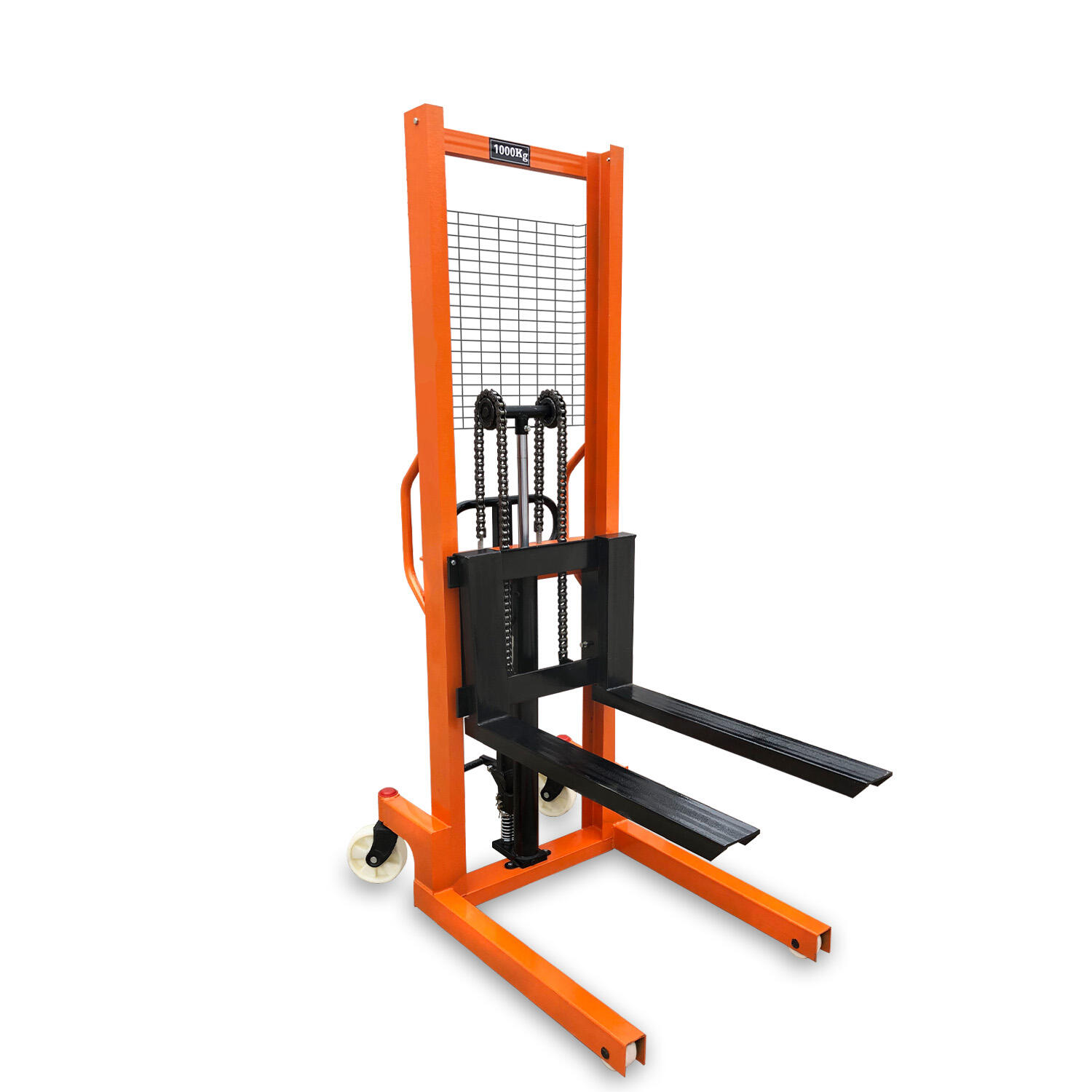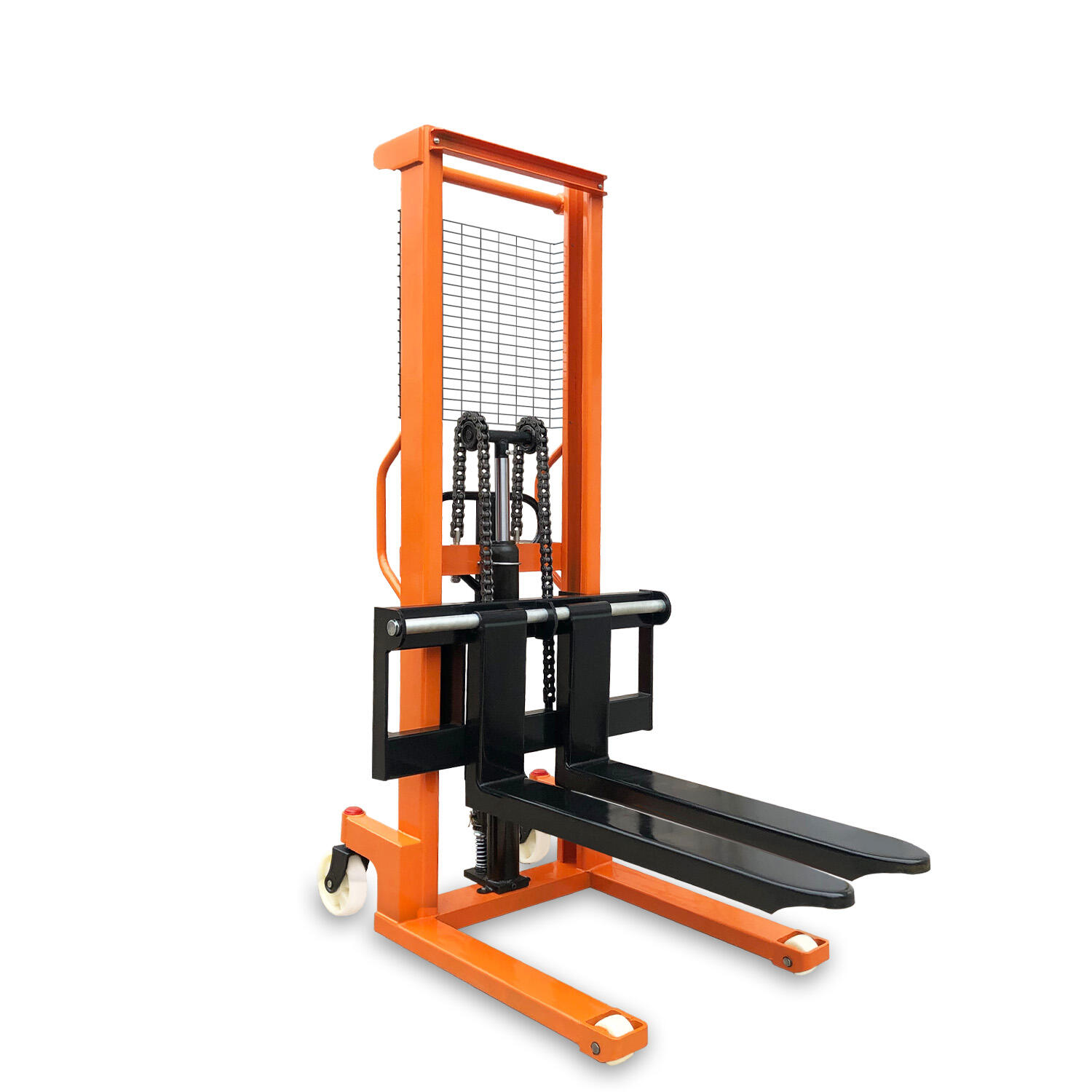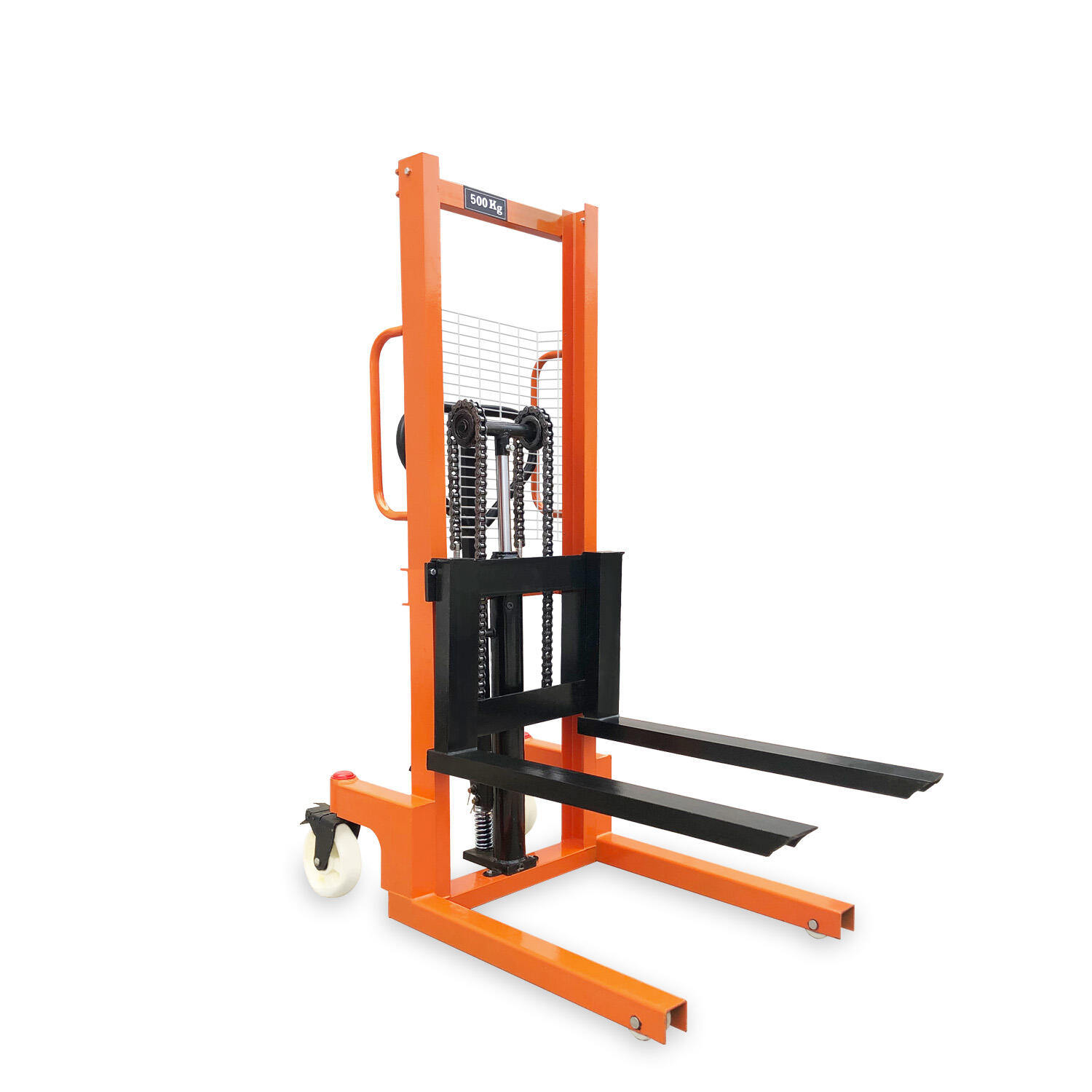A manual stacker truck is a versatile and essential material handling tool designed to lift, transport, and stack palletized goods in a wide range of industrial, commercial, and warehouse environments. Unlike powered stackers that rely on electricity or fuel, this equipment operates entirely through manual effort combined with a hydraulic system, making it a cost-effective solution for businesses with moderate lifting needs. Its compact design, ease of use, and ability to handle various load sizes make it a popular choice for small to medium-sized operations where space is limited and the volume of lifting tasks is manageable without the need for heavy-duty powered machinery. One of the key features of a manual stacker truck is its hydraulic lifting mechanism, which allows operators to raise and lower loads with relative ease. The system consists of a hand pump, a hydraulic cylinder, and hydraulic fluid. When the operator pumps the handle, the hydraulic fluid is forced into the cylinder, causing a piston to extend and lift the forks. This design multiplies the force applied by the operator, enabling even a single person to lift loads that would otherwise require multiple workers. The lifting process is smooth and controlled, ensuring that goods are raised evenly to prevent shifting, which is crucial for maintaining stability during transport and stacking. The forks, typically made from high-strength steel, are designed to fit standard pallet sizes, though some models offer adjustable fork widths to accommodate different pallet dimensions or non-palletized loads. The construction of a manual stacker truck prioritizes durability to withstand the rigors of daily use. The frame is usually constructed from heavy-gauge steel, providing a sturdy base that resists bending or warping under load. Steel is chosen for its strength and longevity, ensuring that the stacker can handle repeated use without compromising its structural integrity. Many models feature a powder-coated finish to protect against rust and corrosion, extending the lifespan of the equipment even in humid or dusty environments such as warehouses, garages, or outdoor storage areas. The wheels are another critical component, designed to provide smooth movement over various surfaces. Most manual stacker trucks are equipped with two fixed rear wheels for stability and two swivel front casters that allow for easy maneuverability. The wheels are often made from polyurethane or rubber, which offer good traction and minimize noise, making them suitable for indoor use where noise levels need to be kept low, such as retail stores or office warehouses. Some models also feature non-marking tires to prevent damage to polished floors, a useful feature for environments like supermarkets or distribution centers with finished concrete surfaces. Maneuverability is a standout advantage of the manual stacker truck, especially in tight spaces. Its compact size allows it to navigate through narrow aisles, around obstacles, and into confined areas such as the back of delivery trucks or small storage rooms. This makes it ideal for operations where larger, powered stackers would be too bulky to operate effectively. The handle, positioned at a comfortable height, allows operators to push or pull the stacker with minimal effort, even when loaded. Some models include an ergonomic grip on the handle to reduce hand fatigue during extended use, a thoughtful design element that enhances operator comfort. Load capacity varies among manual stacker truck models, typically ranging from 500kg to 2 tons, though some heavy-duty versions can handle up to 3 tons. This versatility means there is a manual stacker truck suitable for a wide range of applications, from lifting small boxes in a retail stockroom to moving heavier items like appliances or machinery parts in a workshop. The lifting height is another important specification, with most models capable of lifting loads to heights between 1.5 meters and 3 meters. This allows for stacking goods on shelves, pallet racks, or mezzanines, maximizing vertical storage space in warehouses and storage facilities. Safety is a paramount consideration in the design of a manual stacker truck. Many models are equipped with an overload protection valve that prevents the stacker from lifting loads exceeding its rated capacity, reducing the risk of structural damage or tip-overs. The lowering mechanism is controlled via a release valve, allowing operators to lower loads slowly and precisely to avoid sudden drops that could damage goods or cause instability. Some models also feature a parking brake that locks the wheels in place when the stacker is stationary, ensuring it remains secure during loading, unloading, or when parked on inclines. Additionally, the wide base and low center of gravity of most manual stacker trucks enhance stability, further reducing the risk of accidents. Maintenance of a manual stacker truck is relatively straightforward, thanks to its simple design with few moving parts. Routine maintenance tasks include checking the hydraulic fluid level and ensuring there are no leaks in the hydraulic system, as proper fluid levels are essential for smooth operation. The wheels and casters should be inspected regularly for wear and tear, and lubricated to ensure smooth movement. The forks and frame should be checked for signs of damage, such as cracks or bending, and any issues addressed promptly to prevent further deterioration. The hand pump mechanism should also be lubricated periodically to ensure it operates efficiently. With proper care, a manual stacker truck can provide reliable service for many years, making it a cost-effective investment for businesses. The applications of a manual stacker truck are diverse, spanning various industries. In retail, it is used to move stock from storage rooms to sales floors, handle bulk items like bottled water or paper products, and stack inventory on high shelves. In manufacturing, it assists in transporting raw materials to production lines, moving work-in-progress items between stations, and storing finished goods. Warehouses and distribution centers rely on it for organizing pallets, loading and unloading trucks, and maximizing vertical storage space. It is also useful in workshops, garages, and auto repair shops for lifting engines, tires, or heavy tools. Even in residential settings, such as self-storage facilities, manual stacker trucks help customers move and stack their belongings efficiently. When selecting a manual stacker truck, businesses should consider several factors to ensure it meets their specific needs. Load capacity is a primary consideration, as choosing a stacker with a capacity that exceeds the maximum weight of the loads to be handled ensures safety and longevity. Lifting height is another key factor, as it must align with the height of storage racks or shelves. The width of the forks should match the pallets or loads being handled, with adjustable forks offering greater flexibility. The operating environment is also important; for example, outdoor use may require a stacker with weather-resistant features, while indoor use in tight spaces demands a more compact model. Price is a consideration, but it should be balanced with quality, as a durable, well-constructed stacker will offer better long-term value than a cheaper, less reliable alternative. In conclusion, the manual stacker truck is a versatile, efficient, and cost-effective material handling solution that caters to the needs of a wide range of businesses. Its combination of hydraulic power, durable construction, maneuverability, and safety features makes it an indispensable tool for lifting, transporting, and stacking goods in various environments. Whether used in a retail store, warehouse, manufacturing plant, or workshop, it simplifies manual labor, reduces the risk of injuries, and enhances operational efficiency. By investing in a high-quality manual stacker truck and maintaining it properly, businesses can streamline their material handling processes and achieve long-term productivity gains.


